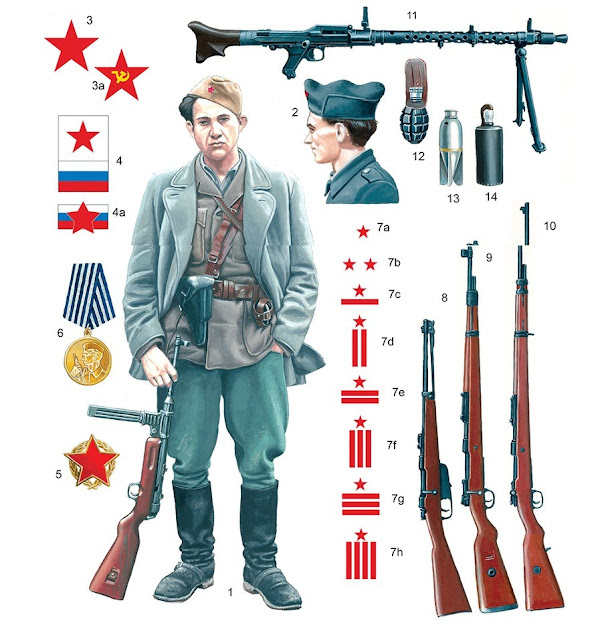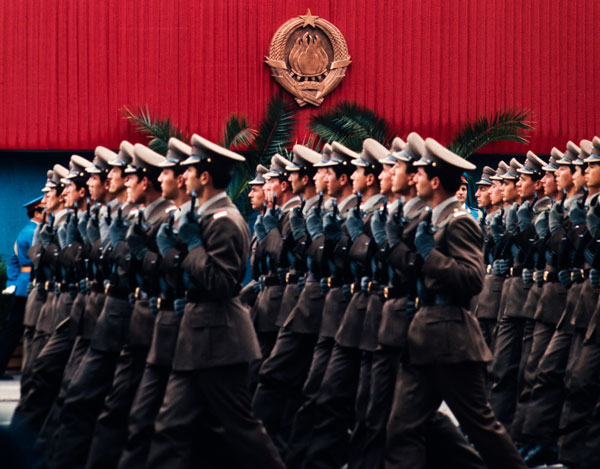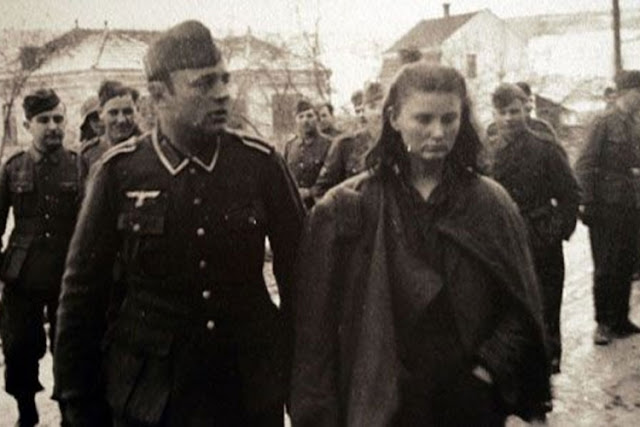Interesting facts and figures on the Balkans in April 1942
 |
| Soldiers of the Black Legion at Koševo, Sarajevo. |
The Black Legion is a colloquial name for the infamous elite unit of
the Ustasha army that operated during the Second World War on the territory of
the then Independent State of Croatia, ie today's Bosnia and Herzegovina and
Croatia. Members of that unit committed a large number of atrocities against the
Serb population in the NDH
April 4 - "Croatian Orthodox Church" founded in the
Independent State of Croatia, Patriarch Germogen Maksimov enthroned on June 7.
 |
| Pavelić, Artuković, Germogen |
The Croatian Orthodox Church was an Orthodox church that officially operated in
the areas under the rule of the Independent State of Croatia from 1942 to 1945
during the Second World War.
April 9 - Operation Trio: Ustasha Black Legion
breaks out of the plan on the Drina, commits crimes.
Operation Trio was the
first large-scale joint German-Italian counter-insurgency operation of World War
II conducted in the Independent State of Croatia (NDH), which included
modern-day Bosnia and Herzegovina. It was carried out in two phases within
eastern Bosnia from 20 April to 13 May 1942, with Ustaše militia and Croatian
Home Guard forces taking part on the Axis side. The aim of the operation was to
target all insurgents between Sarajevo and the Drina river in eastern Bosnia.
These included the communist-led Yugoslav Partisans and Serb nationalist
Chetniks.
15 - 18. 4. - The Italian division "Taurinenze" and the Nevesinje
Chetnik detachment clean the upper Nevesinje field.
 |
| German Major General Friedrich Stahl, Home Guard officer, and Chetnik leader Rade Radic, during a meeting in central Bosnia (in the background is timber traded). |
April 27 - Cooperation of
Chetniks with the Independent State of Croatia: Commander of the Chetnik
detachment Uros Drenovic signed an agreement in Mrkonjic Grad. During the spring
of 1942, the majority of Chetnik detachments in the part of the NDH under German
occupation concluded agreements on an armistice, cooperation, and supply with the
military and civilian authorities of the NDH. The armistice and cooperation
agreements contained clauses on the recognition of the sovereignty of the
Independent State of Croatia by the Chetniks, on the joint fight against the
partisans, the supply of military equipment, the payment of officers and
fighters, the care of the wounded, and the care of the families of the dead.





Comments
Post a Comment